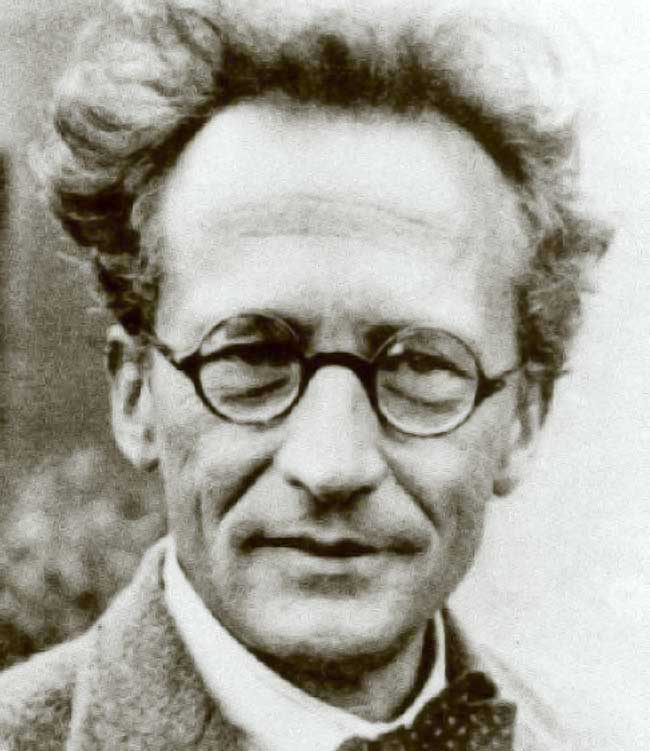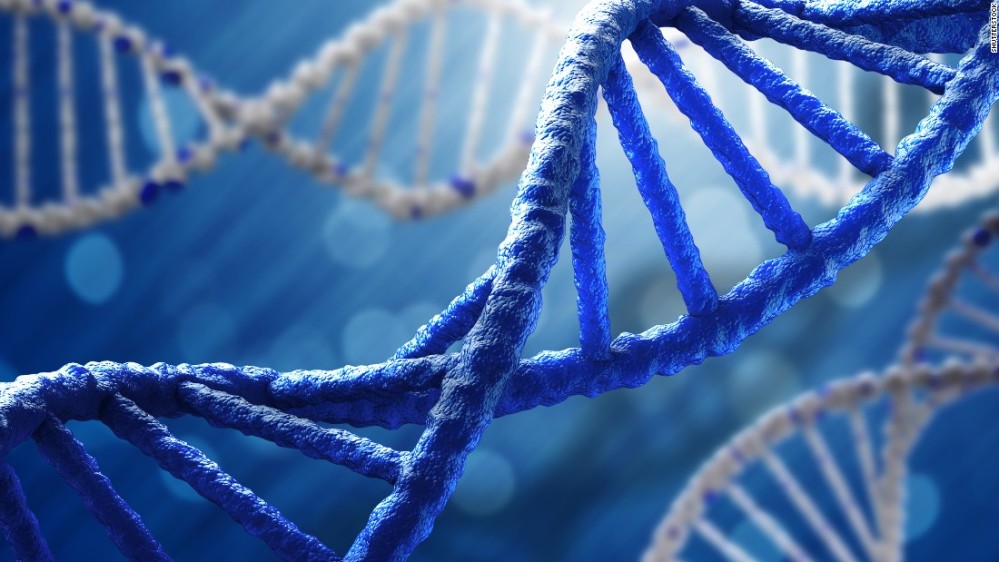Is there a definition for life? The great physicist, Erwin Schrodinger, in his influential 1944 book What is Life? posed this question and remarked that “the obvious inability of present-day physics and chemistry to account for such events is no reason at all for doubting that they can be accounted for by those sciences”. But, indeed, can the “events in time and space which take place within the spatial boundary of a living organism be accounted for by physics and chemistry” as Schrodinger so earnestly posed? How do the fundamental laws of physics and chemistry converge to produce biological systems of seemingly ordered complexity?
The notion of order from disorder is not alien to statistical mechanics, where the configuration of the system, whether it be ordered or disordered, is a function of thermal motion. Vast numbers of molecules are averaged to generate macroscopic precision with well-defined states of thermodynamic properties. For instance, the individual constituents of the system possess certain physical properties (i.e. velocity and momentum) and collectively converge to produce macro-structure of behaviours (i.e. density, pressure, and temperature) that are compatible with the statistical behaviour of each constituent particle. A number of different arrangements are possible, each of which is impossible to measure precisely in an experimental setting but which produce average measurable quantities.

According to Schrodinger, however, this is not how biological systems work. The laws of physics that mold solids and gases into ornate complexity are not the same laws of nature that morph biological systems. The order of biological systems seems to be an inherent property rather than a convergent manifestation of statistical approximation. It is a function of laws that generate order from pre-existing order, which in the first place derives from chaos. Schrodinger calculated that the number of atoms that would be present in life’s molecules would be no more than a few million – an amount that is too small for statistical fluctuations to generate the kind of order seen in living organisms, especially with an ever-increasing number of events. Schrodinger had a conceptual idea of genetic information, then only thought of in abstract terms, as being encoded by an aperiodic crystal representing a definitely ordered but a non-repeating arrangement, the stability of which mutates by virtue of quantum jumps. This idea was perhaps the first to associate code with biological determinism.
But, how, from the perspective of nonequilibrium thermodynamics, can such systems embark on an ever-increasing complexity when any process is tendentially bound to a state of maximum entropy. Indeed, as Schrodinger reasoned, all living things absorb energy. Biological systems are energy processing devices, where energy from the sun is used by enzymes to form high-energy bonds in cells. Cellular respiration uses chemical bond energy to do work and give off heat in the process. A continuous flow of energy, thus maintains the system. And, while each living organism perpetually increases its entropy, it “feeds upon negative entropy” from the environment, temporarily preserving order in the process and counteracting heat dispersion.
All living organisms have acquired chemiosmotic systems, manifestable in the omnipresent proton gradient seen in all of life. Indeed, it is the most important source of ATP, the energy currency of life. Living things strip electrons from food, whereby they are transported down an electron transport chain. Energetically favourable and unfavourable reactions are coupled, in the process, to generate energy in the form of ATP. Hundreds of trillion trillion molecules of ATP are released each day, releasing vast amounts of energy. This peculiar mechanism of energy generation seems to be a universal, or rather more puristically, a worldwide feature of all life as we know it. It remains a mystery as to why it is so and as to why it even evolved in the first place.
Schrodinger was convinced that new laws of physics had to be discovered in order to explain the operation of living things and their apparent order from order. But, Schrodinger’s anticipation of an aperiodic crystal encoding hereditary information very presciently predated Watson and Crick’s famous discovery of the structure of DNA. Indeed, it was Schrodinger’s book that inspired Crick, initially a physicist, to move into biophysics and study DNA and that spurred Jim Watson to study genetics as an undergraduate. Watson spoke of his great admiration of Schrodinger’s prophetic vision in his book DNA: The Secret of Life and also remarked:
“Our discovery had put an end to a debate as old as the human species: Does life have some magical, mystical essence, or is it, like any chemical reaction carried out in a science class, the product of normal physical and chemical processes? Is there something divine at the heart of a cell that brings it to life? The double helix answered that question with a definitive No. [….] Life, we now know, is nothing but a vast array of coordinated chemical reactions. The ‘secret’ to that coordination is the breathtakingly complex set of instructions inscribed, again chemically, in our DNA.”

We now know of about 20,000 different protein-encoding genes in a typical mammalian cell. But, quite counter-intuitively, the number of genes does not necessarily correlate with complexity or even intelligence. In fact, we possess less genes than Arabidopsis (25,000 genes) and corn (32,000 genes). Complexity seems to be determined not by the number of genes but rather by the number of different genes. Each gene in humans encodes more proteins than many other species. How, when, and where those different genes are expressed and how they are regulated is a defining factor that determines developmental plans and ensures their diversity. Complexity is also linked the amount of non-coding regions in the genome that do not encode any proteins. 98 % of the human genome is, in fact, non-coding. It is thought that increases in non-coding segments allow for more genetic function with concomitant increases in developmental and regulatory complexity.
Is Schrodinger’s quest to define life possible? Organization, metabolism, growth, reproduction, movement, homeostasis, and evolutionary adaptation seem to be largely ubiquitous across all kingdoms of Life. However, while all living organisms show order, order is also inherent of things that we consider nonliving as well, for instance, crystals and certain rocks. Living organisms grow and reproduce but, in the same light, nonliving entities such as fire can grow and spread over a wide distance. Living organisms utilise energy to function but so do fridges. Living organisms seem to respond to changes in the environment but so do thermostats. But, perhaps the most universal aspect of being alive is the ability of evolutionary adaptation by means of natural selection, the nonrandom selection of randomly varying genetic equipment.
Could evolution explain the emergence of consciousness? What seems to draw the line between innate behavioural patterns of simple organisms and the highly conscious operation of higher animals like humans. Was consciousness merely an emergent consequence of adaptive complexity in order to cope with ever-increasing novel and changing situations? Does consciousness exist or is it some other manifestation of neural networks that we are, hitherto, unaware of.
But, life as we know it is only based on our perception of life as it appears to us on Earth. The properties that we ascribe to living organisms may not be the same properties that living organisms elsewhere in the universe might possess. We only know of one planet where life has evolved and it is our only example of what life could be rather than what life necessarily is. The fact that no clear line exists between what is alive and what is not means that we have to be careful when looking for forms of life elsewhere in the universe, especially ones that are likely to be quite different.
“There is only one science, physics. All the rest is social work.” – James Watson
The Reddit post near the front page threw me off a bit, but once I got into a few paragraphs, I knew that your post was much better than what the title suggested(on Reddit). Many people in the scientific community consider Schrödinger’s lecture to be of value today, not because of its accuracy, but because of his willingness to be “Boltzmannesque.” In other words, he was willing to venture outside of his field of expertise, ask difficult questions, and most importantly, willing to put statements of conjecture into the public realm that could be falsified in the future. If one wishes to know more about the progress being made in regards to the origins of life, I would suggest reading some of Jeremy England’s research available on his website. Though it looks like you’ve read some of Ilya Prigogine’s work as well, I’d suggest further reading of his books in order to gain insight as to how scientists should orient their thinking when trying to discover the chemical origins of life on this planet. If you’re warning scientists about throwing caution to the wind about the nature of life outside of our own, then I think your concerns are largely unfounded. This is in my mind, a cart before the horse problem that is perpetuated largely by the public in order to have fun, but vacuous discussions about what could be possible. I feel the proper steps, as with what current emphasis of research is trying to figure out, is the origin of life here on Earth first, then compare and contrast what we know outside. If we cannot do this, then we have no way of orienting our scope and measure as evidenced by the disastrous paper claiming it was possible to have arsenic in the backbone of DNA back in 2010. I wish I had more time to discuss other reasons why this is the case, but I hope these are good suggestions to guide you further along your path of discovery and inquiry.
Happy Saturnalia
LikeLike
tendentially… not a word.
LikeLike
https://en.wiktionary.org/wiki/tendentially
LikeLike
Perhaps a good reading on the subject could be “The web of life” from Fritjof Capra, i found it complicated but very interesting
LikeLike